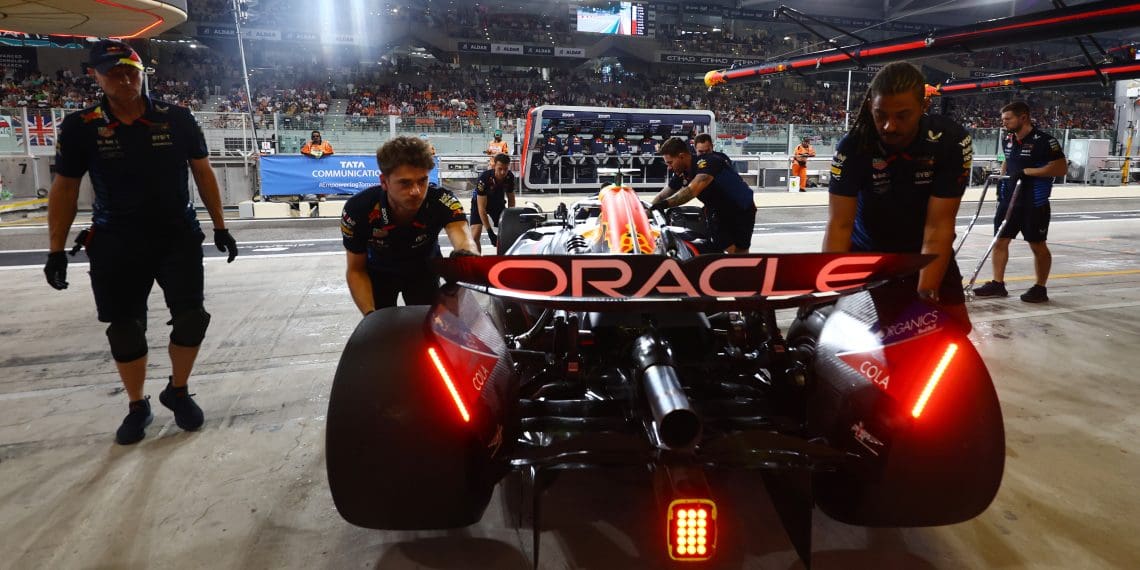Red Bull Racing has faced significant challenges with its aging wind tunnel at the Bedford facility, which has increasingly impacted the team’s development efforts in Formula 1. This issue came to the forefront during the struggles with the RB20 in the 2024 season, as inconsistencies in wind tunnel data created headaches for the team.
Legacy Wind Tunnel Challenges
The Bedford wind tunnel, originally built in 1947 for aeronautical research, has been repurposed multiple times, including for motorsport after Jaguar’s acquisition in 2004. Despite technological upgrades inside, the facility’s concrete structure and limited insulation make it highly susceptible to external temperature fluctuations. These fluctuations impact the tunnel’s accuracy and repeatability—a critical issue in a sport that thrives on precision.
Red Bull’s technical director, Pierre Wache, highlighted the difficulty of working with varying air temperatures, which cause air molecules to behave differently. This variability makes consistent data collection a major challenge, particularly in a development era where even the smallest aerodynamic gains can make a difference.
“The main problem is accuracy and repeatability,” Wache said. “When you’re fighting the flattening development curve, it’s difficult to work with it because we are very dependent on the temperature in the UK.”
Horner’s Frustration
Red Bull team principal Christian Horner likened the discrepancy between track data, CFD models, and wind tunnel results to having “three watches that are all telling different times.” As a result, the team had to rely heavily on track testing to validate its development, slowing progress during a highly competitive 2024 season.
The Bedford tunnel’s limitations were most pronounced during extreme temperatures:
- Below 5°C, the tunnel becomes unusable.
- Above 25°C, its accuracy declines sharply.
Future Solution: A New Wind Tunnel
Acknowledging the limitations of the Bedford tunnel, Red Bull began construction of a state-of-the-art wind tunnel at its Milton Keynes headquarters. However, the decision was delayed for years due to regulatory uncertainty over the future of wind tunnels in F1, with discussions about potentially banning them in favor of computational fluid dynamics (CFD).
“Adrian [Newey] held off pushing for a new tunnel until there was clarity,” Horner explained. “But it got to a point where Aston Martin wanted a new tunnel, and the FIA changed their stance.”
The new facility is expected to be completed in 2026 and operational in time to influence development for the 2027 car. It will not only improve accuracy but also operate more efficiently within F1’s cost cap regulations.
Short-Term Solutions
While awaiting the new wind tunnel, Red Bull has implemented workarounds to maximize the existing facility. This includes:
- Monitoring and controlling test conditions closely.
- Relying more on track data and CFD to validate results.
- Accepting a slower development curve compared to rivals with modern facilities.
Impact on Performance
Despite the challenges, Red Bull managed to stay competitive, securing multiple wins in the 2024 season and clinching another drivers’ title with Max Verstappen. However, their reliance on aging infrastructure has underscored the importance of modern facilities in maintaining dominance in F1.
Looking Ahead
With the completion of the new wind tunnel on the horizon, Red Bull is poised to address its current development bottlenecks. In the meantime, teams like Racing Bulls, which also use the Bedford facility, will continue to face the same limitations. As technical director Jody Egginton aptly put it:
“It’s like an old house. You just have to keep an eye on it.”
By 2027, Red Bull’s new wind tunnel could become a game-changer, potentially restoring their position as the benchmark team in F1 aerodynamics. Until then, it’s a matter of leveraging ingenuity and resilience to navigate the challenges of an outdated but storied facility.










